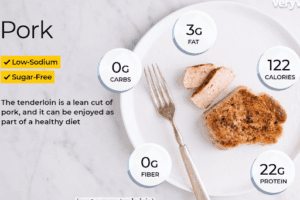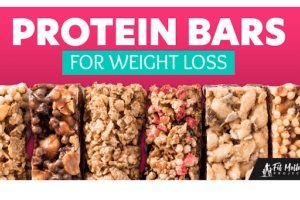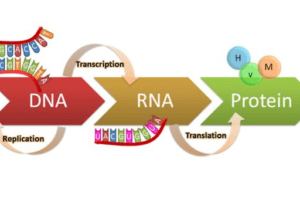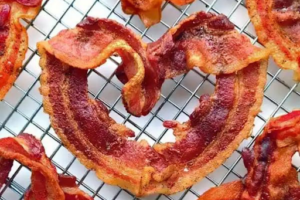The amount of protein in a pork chop can vary depending on a few things, but let’s break it down to give you a good idea:
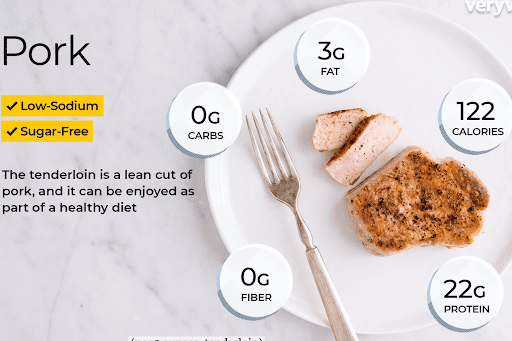
Size and cut
A typical serving of pork chop (around 3 ounces cooked) can have anywhere from 20 to 35 grams of protein. Bone-in chops tend to have slightly less protein per ounce compared to boneless chops because some of the weight is bone. Leaner cuts like sirloin or tenderloin will have a higher protein content per ounce than fattier cuts like ribeye.
Cooking method
Generally, cooking methods that don’t add extra fat or breading won’t significantly affect the protein content. So, baking, grilling, or broiling are good choices.
Here’s a quick reference:
- Boneless, lean pork chop (3 oz cooked): Around 28 grams of protein
- Bone-in pork chop (3 oz cooked): Around 22 grams of protein
Remember, these are estimates, and the exact amount of protein in your specific pork chop might differ slightly.
Does the amount of protein differ by type of pork chop (bone-in, boneless, loin, etc.)?
Yes, the type of pork chop you choose can affect how much protein it has.
Bone-in vs. boneless
Bone-in pork chops generally have less protein per ounce because the bone weighs something but doesn’t have protein.
Cut of meat
Different parts of the pig have different fat and leanness levels. For example, a pork loin chop tends to be leaner with more protein compared to a rib chop, which might have a bit more fat.
So, if you’re looking to maximize your protein intake, a boneless, lean cut like a pork loin chop would be a good choice.
How much protein is in a typical serving of pork chop?
The protein content of a pork chop can fluctuate based on several factors, including the specific cut, the chop’s size, and the preparation method.
Generally, a standard 3-ounce serving of cooked pork chop provides approximately 20 to 25 grams of protein. This amount can vary depending on the leanness of the cut. For instance, loin chops tend to be leaner and offer slightly more protein compared to rib chops, which may contain higher fat content.
The actual protein content in your pork chop can be influenced by factors such as the amount of visible fat trimmed before cooking.
To obtain the most precise protein information for a particular pork chop, it’s recommended to check the nutrition label on the packaging or utilize a food tracking app or website that provides detailed nutritional data.
While protein is a significant nutrient in pork chops, it’s essential to consider other nutritional aspects such as fat and calorie content. Selecting lean cuts and cooking methods that minimize added fat can help you enjoy the benefits of pork chops while maintaining a balanced diet.
Is pork chop a good source of protein for building muscle?
Pork chops are indeed a commendable choice for individuals aiming to increase muscle mass. As a prime source of protein, they offer a substantial contribution to muscle growth and repair.
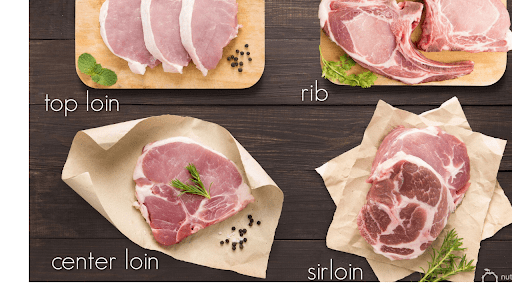
Protein is the fundamental building block of muscle tissue, and pork chops provide a generous amount of high-quality protein. This means they contain all the essential amino acids your body requires for optimal muscle development.
To maximize the benefits of pork chops for muscle building, consider the following:
Lean Cuts
Opt for leaner cuts of pork chops to reduce fat intake while preserving protein content. Look for options labeled as “loin” or “center loin” as these typically have lower fat content.
Cooking Method
The way you cook your pork chops can impact its nutritional value. Grilling, baking, or broiling are generally preferred over frying as these methods help retain protein while minimizing added fat and calories.
Portion Size
While pork chops are a valuable protein source, it’s essential to consume them in moderation as part of a balanced diet. Consider the overall calorie intake and protein requirements based on your fitness goals.
Complementary Nutrients
For optimal muscle growth, combine pork chops with other nutrient-rich foods. Incorporate carbohydrates for energy and healthy fats to support hormone production and overall health.

While pork chops are a fantastic protein source, they should be part of a comprehensive muscle-building strategy that includes resistance training, adequate rest, and other protein-rich foods.
How much protein do I need per day, and can pork chops help me meet that goal?
How much protein you need depends on a few things: your age, weight, activity level, and overall health. Generally, adults need about 0.8 grams of protein per kilogram of body weight each day. But this is just a baseline.
A pork chop can definitely contribute to your daily protein intake. As a reminder, a typical serving (around 3 ounces cooked) has about 20-30 grams of protein. So, while pork chops alone won’t cover your entire protein needs, they can be a good part of your protein-rich diet.
If you have specific dietary goals or concerns, it’s always a good idea to talk to a healthcare professional or registered dietitian.
Are pork chops a good protein source for a keto diet?
Pork Chops and Your Diet
Whether you’re building muscle, trying to lose weight, or following a specific diet, pork chops can be a versatile choice.
Incorporating pork chops into your diet, along with regular strength training, can support your fitness goals.
Weight Management: While all foods play a role in weight management, pork chops can be part of a balanced diet. Opt for lean cuts and portion control to maximize benefits.
Keto Diet: Pork chops align well with the keto diet’s high-protein, low-carbohydrate focus. Choose lean cuts and prepare them with keto-friendly methods like grilling or baking.
While pork chops are a great protein source, they should be part of a balanced diet that includes various foods for optimal nutrition.
What other nutrients are in pork chops besides protein?
While protein undeniably takes center stage in pork chops, these cuts of meat offer a wealth of additional nutrients essential for overall health.
Vitamins
Pork chops are a notable source of B vitamins, particularly B6 and B12.

Minerals
Zinc, iron, and selenium are essential minerals found in pork chops. Zinc supports immune function and wound healing, iron is vital for oxygen transport, and selenium acts as an antioxidant, protecting cells from damage.
By incorporating pork chops into a balanced diet, you can enjoy the benefits of these essential nutrients alongside the protein they provide.
What impact does cooking method have on pork chop protein?
The cooking method employed for pork chops has a minimal impact on the overall protein content. The core protein structure remains largely unaffected by heat. However, the method can influence the quality of the protein and the overall nutritional profile of the dish.
Dry Heat Methods (Grilling, Baking, Broiling): These methods generally preserve protein content effectively. They minimize protein loss and often result in a juicier, more flavorful pork chop.
Moist Heat Methods (Boiling, Steaming): While these methods cook the pork thoroughly, some protein can leach into the cooking liquid. This can reduce the protein content of the meat itself.
Frying
This method can increase the overall calorie and fat content of the pork chop, diluting the protein content on a per-calorie basis.
It is essential to note that the primary factors influencing protein content in pork chops are the cut of meat and its inherent fat content. Cooking method primarily affects the texture, flavor, and overall nutritional profile, rather than the core protein quantity.
FAQs about Protein in Pork Chops
Q: How much protein is in a typical pork chop?
A: The protein content in a pork chop can vary based on its size, cut, and cooking method. Generally, a 3-ounce serving of cooked pork chop contains approximately 20-25 grams of protein. However, leaner cuts like loin chops tend to be higher in protein compared to fattier cuts like rib chops.
Q: Does the type of pork chop affect its protein content? A: Yes, the type of pork chop significantly impacts its protein content. Bone-in chops generally have less protein per ounce compared to boneless chops due to the weight of the bone. Additionally, leaner cuts like loin and tenderloin offer more protein than fattier cuts like ribeye.
Q: How does cooking a pork chop affect its protein content?
A: Cooking methods generally have a minimal impact on the overall protein content of a pork chop. However, dry heat methods like grilling or baking tend to preserve protein better than moist heat methods like boiling or steaming.
Q: Is pork chop a good source of protein for building muscle?
A: Yes, pork chops are an excellent protein source for building muscle. They provide high-quality protein, containing all essential amino acids necessary for muscle growth and repair. Choosing lean cuts and cooking methods that minimize fat content can maximize the benefits for muscle building.
Q: How much protein do I need per day, and can pork chops help me meet that goal?
A: Protein needs vary based on age, weight, activity level, and overall health. Adults typically require about 0.8 grams of protein per kilogram of body weight daily. While pork chops can contribute significantly to your protein intake, they should be part of a balanced diet.
Q: Are pork chops a good protein source for a keto diet?
A: Yes, pork chops align well with the keto diet due to their high protein and low carbohydrate content. Choosing lean cuts and keto-friendly cooking methods is essential for maximizing their benefits within this dietary plan.
Q: What other nutrients are in pork chops besides protein?
A: Pork chops offer a range of essential nutrients beyond protein, including B vitamins (B6 and B12), zinc, iron, and selenium. These nutrients contribute to various bodily functions such as energy metabolism, immune function, and red blood cell production.
